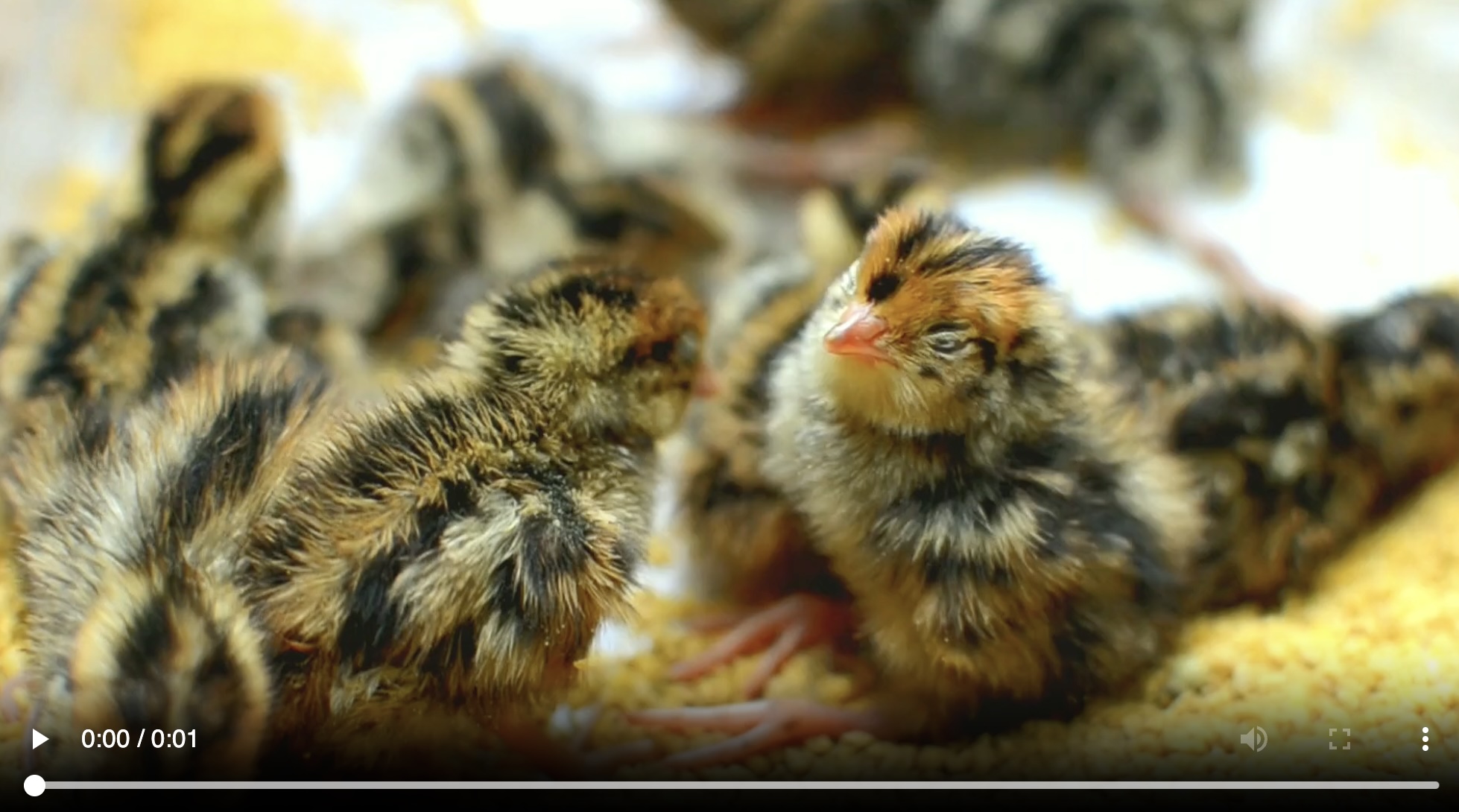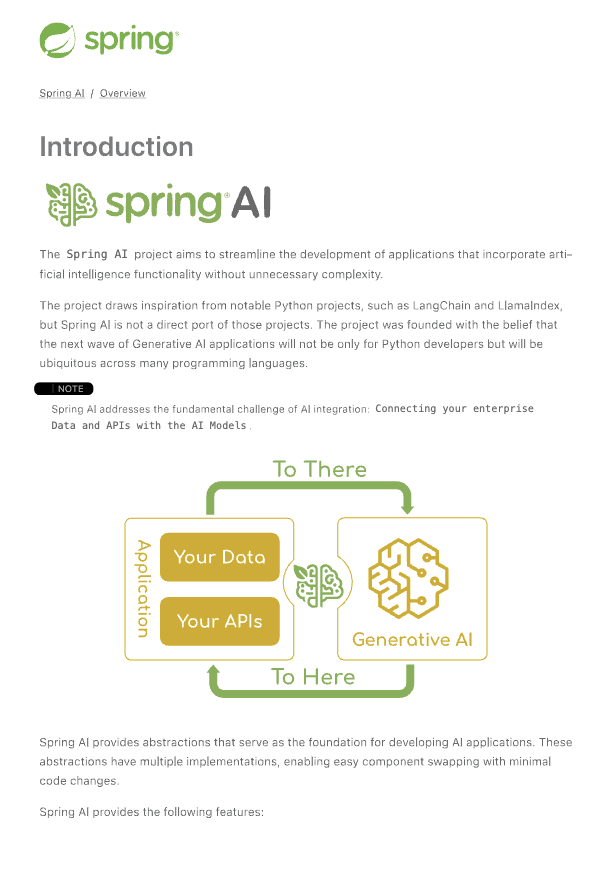|
For the latest snapshot version, please use Spring AI 1.1.0! |
Bedrock Converse API
Amazon Bedrock Converse API provides a unified interface for conversational AI models with enhanced capabilities including function/tool calling, multimodal inputs, and streaming responses.
The Bedrock Converse API has the following high-level features:
-
Tool/Function Calling: Support for function definitions and tool use during conversations
-
Multimodal Input: Ability to process both text and image inputs in conversations
-
Streaming Support: Real-time streaming of model responses
-
System Messages: Support for system-level instructions and context setting
The Bedrock Converse API provides a unified interface across multiple model providers while handling AWS-specific authentication and infrastructure concerns.
Currently, the Converse API Supported Models include:
Amazon Titan, Amazon Nova, AI21 Labs, Anthropic Claude, Cohere Command, Meta Llama, Mistral AI.
|
|
Following the Bedrock recommendations, Spring AI is transitioning to using Amazon Bedrock’s Converse API for all chat conversation implementations in Spring AI. While the existing InvokeModel API supports conversation applications, we strongly recommend adopting the Converse API for all Chat conversation models. The Converse API does not support embedding operations, so these will remain in the current API and the embedding model functionality in the existing |
Prerequisites
Refer to Getting started with Amazon Bedrock for setting up API access
-
Obtain AWS credentials: If you don’t have an AWS account and AWS CLI configured yet, this video guide can help you configure it: AWS CLI & SDK Setup in Less Than 4 Minutes!. You should be able to obtain your access and security keys.
-
Enable the Models to use: Go to Amazon Bedrock and from the Model Access menu on the left, configure access to the models you are going to use.
Auto-configuration
|
There has been a significant change in the Spring AI auto-configuration, starter modules' artifact names. Please refer to the upgrade notes for more information. |
Add the spring-ai-starter-model-bedrock-converse dependency to your project’s Maven pom.xml or Gradle build.gradle build files:
-
Maven
-
Gradle
<dependency>
<groupId>org.springframework.ai</groupId>
<artifactId>spring-ai-starter-model-bedrock-converse</artifactId>
</dependency>dependencies {
implementation 'org.springframework.ai:spring-ai-starter-model-bedrock-converse'
}| Refer to the Dependency Management section to add the Spring AI BOM to your build file. |
Chat Properties
The prefix spring.ai.bedrock.aws is the property prefix to configure the connection to AWS Bedrock.
| Property | Description | Default |
|---|---|---|
spring.ai.bedrock.aws.region |
AWS region to use. |
us-east-1 |
spring.ai.bedrock.aws.timeout |
AWS timeout to use. |
5m |
spring.ai.bedrock.aws.access-key |
AWS access key. |
- |
spring.ai.bedrock.aws.secret-key |
AWS secret key. |
- |
spring.ai.bedrock.aws.session-token |
AWS session token for temporary credentials. |
- |
|
Enabling and disabling of the chat auto-configurations are now configured via top level properties with the prefix To enable, spring.ai.model.chat=bedrock-converse (It is enabled by default) To disable, spring.ai.model.chat=none (or any value which doesn’t match bedrock-converse) This change is done to allow configuration of multiple models. |
The prefix spring.ai.bedrock.converse.chat is the property prefix that configures the chat model implementation for the Converse API.
| Property | Description | Default |
|---|---|---|
spring.ai.bedrock.converse.chat.enabled (Removed and no longer valid) |
Enable Bedrock Converse chat model. |
true |
spring.ai.model.chat |
Enable Bedrock Converse chat model. |
bedrock-converse |
spring.ai.bedrock.converse.chat.options.model |
The model ID to use. You can use the Supported models and model features |
None. Select your modelId from the AWS Bedrock console. |
spring.ai.bedrock.converse.chat.options.temperature |
Controls the randomness of the output. Values can range over [0.0,1.0] |
0.8 |
spring.ai.bedrock.converse.chat.options.top-p |
The maximum cumulative probability of tokens to consider when sampling. |
AWS Bedrock default |
spring.ai.bedrock.converse.chat.options.top-k |
Number of token choices for generating the next token. |
AWS Bedrock default |
spring.ai.bedrock.converse.chat.options.max-tokens |
Maximum number of tokens in the generated response. |
500 |
Runtime Options
Use the portable ChatOptions or ToolCallingChatOptions portable builders to create model configurations, such as temperature, maxToken, topP, etc.
On start-up, the default options can be configured with the BedrockConverseProxyChatModel(api, options) constructor or the spring.ai.bedrock.converse.chat.options.* properties.
At run-time you can override the default options by adding new, request specific, options to the Prompt call:
var options = ToolCallingChatOptions.builder()
.model("anthropic.claude-3-5-sonnet-20240620-v1:0")
.temperature(0.6)
.maxTokens(300)
.toolCallbacks(List.of(FunctionToolCallback.builder("getCurrentWeather", new WeatherService())
.description("Get the weather in location. Return temperature in 36°F or 36°C format. Use multi-turn if needed.")
.inputType(WeatherService.Request.class)
.build()))
.build();
String response = ChatClient.create(this.chatModel)
.prompt("What is current weather in Amsterdam?")
.options(options)
.call()
.content();Tool Calling
The Bedrock Converse API supports tool calling capabilities, allowing models to use tools during conversations. Here’s an example of how to define and use @Tool based tools:
public class WeatherService {
@Tool(description = "Get the weather in location")
public String weatherByLocation(@ToolParam(description= "City or state name") String location) {
...
}
}
String response = ChatClient.create(this.chatModel)
.prompt("What's the weather like in Boston?")
.tools(new WeatherService())
.call()
.content();You can use the java.util.function beans as tools as well:
@Bean
@Description("Get the weather in location. Return temperature in 36°F or 36°C format.")
public Function<Request, Response> weatherFunction() {
return new MockWeatherService();
}
String response = ChatClient.create(this.chatModel)
.prompt("What's the weather like in Boston?")
.toolNames("weatherFunction")
.inputType(Request.class)
.call()
.content();Find more in Tools documentation.
Multimodal
Multimodality refers to a model’s ability to simultaneously understand and process information from various sources, including text, images, video, pdf, doc, html, md and more data formats.
The Bedrock Converse API supports multimodal inputs, including text and image inputs, and can generate a text response based on the combined input.
You need a model that supports multimodal inputs, such as the Anthropic Claude or Amazon Nova models.
Images
For models that support vision multimodality, such as Amazon Nova, Anthropic Claude, Llama 3.2, the Bedrock Converse API Amazon allows you to include multiple images in the payload. Those models can analyze the passed images and answer questions, classify an image, as well as summarize images based on provided instructions.
Currently, Bedrock Converse supports the base64 encoded images of image/jpeg, image/png, image/gif and image/webp mime types.
Spring AI’s Message interface supports multimodal AI models by introducing the Media type.
It contains data and information about media attachments in messages, using Spring’s org.springframework.util.MimeType and a java.lang.Object for the raw media data.
Below is a simple code example, demonstrating the combination of user text with an image.
String response = ChatClient.create(chatModel)
.prompt()
.user(u -> u.text("Explain what do you see on this picture?")
.media(Media.Format.IMAGE_PNG, new ClassPathResource("/test.png")))
.call()
.content();
logger.info(response);It takes as an input the test.png image:

along with the text message "Explain what do you see on this picture?", and generates a response something like:
The image shows a close-up view of a wire fruit basket containing several pieces of fruit. ...
Video
The Amazon Nova models allow you to include a single video in the payload, which can be provided either in base64 format or through an Amazon S3 URI.
Currently, Bedrock Nova supports the videos of video/x-matroska, video/quicktime, video/mp4, video/webm, video/x-flv, video/mpeg, video/x-ms-wmv and video/3gpp mime types.
Spring AI’s Message interface supports multimodal AI models by introducing the Media type.
It contains data and information about media attachments in messages, using Spring’s org.springframework.util.MimeType and a java.lang.Object for the raw media data.
Below is a simple code example, demonstrating the combination of user text with a video.
String response = ChatClient.create(chatModel)
.prompt()
.user(u -> u.text("Explain what do you see in this video?")
.media(Media.Format.VIDEO_MP4, new ClassPathResource("/test.video.mp4")))
.call()
.content();
logger.info(response);It takes as an input the test.video.mp4 image:

along with the text message "Explain what do you see in this video?", and generates a response something like:
The video shows a group of baby chickens, also known as chicks, huddled together on a surface ...
Documents
For some models, Bedrock allows you to include documents in the payload through Converse API document support, which can be provided in bytes. The document support has two different variants as explained below:
-
Text document types (txt, csv, html, md, and so on), where the emphasis is on text understanding. These use case include answering based on textual elements of the document.
-
Media document types (pdf, docx, xlsx), where the emphasis is on vision-based understanding to answer questions. These use cases include answering questions based on charts, graphs, and so on.
Currently the Anthropic PDF support (beta) and Amazon Bedrock Nova models support document multimodality.
Below is a simple code example, demonstrating the combination of user text with a media document.
String response = ChatClient.create(chatModel)
.prompt()
.user(u -> u.text(
"You are a very professional document summarization specialist. Please summarize the given document.")
.media(Media.Format.DOC_PDF, new ClassPathResource("/spring-ai-reference-overview.pdf")))
.call()
.content();
logger.info(response);It takes as an input the spring-ai-reference-overview.pdf document:

along with the text message "You are a very professional document summarization specialist. Please summarize the given document.", and generates a response something like:
**Introduction:** - Spring AI is designed to simplify the development of applications with artificial intelligence (AI) capabilities, aiming to avoid unnecessary complexity. ...
Sample Controller
Create a new Spring Boot project and add the spring-ai-starter-model-bedrock-converse to your dependencies.
Add an application.properties file under src/main/resources:
spring.ai.bedrock.aws.region=eu-central-1
spring.ai.bedrock.aws.timeout=10m
spring.ai.bedrock.aws.access-key=${AWS_ACCESS_KEY_ID}
spring.ai.bedrock.aws.secret-key=${AWS_SECRET_ACCESS_KEY}
# session token is only required for temporary credentials
spring.ai.bedrock.aws.session-token=${AWS_SESSION_TOKEN}
spring.ai.bedrock.converse.chat.options.temperature=0.8
spring.ai.bedrock.converse.chat.options.top-k=15Here’s an example controller using the chat model:
@RestController
public class ChatController {
private final ChatClient chatClient;
@Autowired
public ChatController(ChatClient.Builder builder) {
this.chatClient = builder.build();
}
@GetMapping("/ai/generate")
public Map generate(@RequestParam(value = "message", defaultValue = "Tell me a joke") String message) {
return Map.of("generation", this.chatClient.prompt(message).call().content());
}
@GetMapping("/ai/generateStream")
public Flux<ChatResponse> generateStream(@RequestParam(value = "message", defaultValue = "Tell me a joke") String message) {
return this.chatClient.prompt(message).stream().content();
}
}
